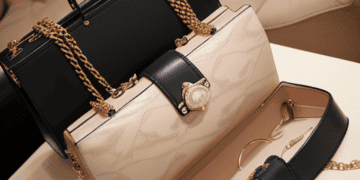China’s market for pre-owned luxury goods has seen considerable growth recently, with a rebound from the COVID-19 pandemic and an increase in the purchasing power of the country’s middle-income group, according to experts at a recent trade forum. The Yaok Institute, a market research firm, estimates the potential value of the Chinese secondhand luxury goods market could surpass 3 trillion yuan ($420 billion). This market includes popular items like handbags, clothing, footwear, watches, jewelry, and wines.
However, detailed sales data for 2022 and projections for 2023 were not specified. The China Entry-Exit Inspection and Quarantine Association highlighted the role of e-commerce in driving market growth and emphasized the need for the market’s trading standards to align with global norms. Wang Xin, the association’s president, called for the cultivation of professional talent and stronger cooperation with educational and research institutions to support market development. Research by the University of International Business and Economics in Beijing indicates that young female consumers are a significant demographic in this market, particularly for high-end handbags. The report also noted potential growth in clothing and footwear sales, and acknowledged the spending power of male consumers and those over 40. Zhang Mengxia, director of Luxury China at the UIBE, stated that the top eight luxury brands dominate about 80% of secondhand luxury transactions, with some lesser-known brands gaining popularity due to unique designs.
Zhang also mentioned that China’s market, while large, has a lower circulation rate compared to markets in Europe, the United States, and Japan. Global luxury market projections by Bain &Co estimate a growth to 1.5 trillion euros ($1.64 trillion) in the current year, an 8-10% increase over 2022, potentially setting a new industry record. This growth is attributed to a resurgence in social interactions and travel. By 2025, China is anticipated to become the largest luxury consumption market globally, with strong performance already noted in the first quarter. Bain &Co also highlighted the potential growth of Hainan island as a luxury hub, with plans to become a duty-free island by 2025.
The growth in the firsthand luxury goods market is expected to positively impact the secondhand market, with more luxury brands showing interest in the sector and launching their own trading platforms. Zhang from Luxury China emphasized the importance of authenticity and consumer trust for the sector’s healthy development. Zhang Zhigang, former vice-minister of commerce, commented that the growing secondhand market could support China’s circular economy and green development goals, contributing to the country’s dual-carbon objectives.
Stay updated with supply chain news at The Supply Chain Report. Learn more about international trade at ADAMftd.com with free tools.
#ChinaLuxuryMarket #SecondhandLuxuryGoods #PreOwnedLuxury #LuxuryConsumption #Handbags #LuxuryWatches #LuxuryJewelry #EcommerceGrowth #SustainableLuxury #CircularEconomy #LuxuryBrands #LuxuryChina #HainanIsland #LuxuryMarketGrowth #BainAndCo #LuxuryTrade #ConsumerTrust #DualCarbon #LuxuryGrowth #ChinaEconomy #LuxuryShopping

















